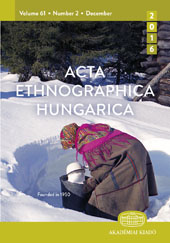Archaeological Excavation of the Haban Colony Site at Sárospatak
Archaeological Excavation of the Haban Colony Site at Sárospatak
Author(s): István RingerSubject(s): Archaeology, Visual Arts, Social history, Cultural Anthropology / Ethnology
Published by: Akadémiai Kiadó
Keywords: Sárospatak Haban colony; György Rákóczi I; archaeological exploration; pottery kiln; Haban lead-glazed ceramics;
Summary/Abstract: This article reports on the first results of the archaeological excavation of the Haban colony site in Sárospatak begun in 2010. It describes the circumstances of the origin of the Anabaptist colony that can be located precisely from topographical data, and briefly outlines the history of the Haban colony in Sárospatak. In the first two years of the exploration on the basis of a research programme, the archaeological exploration of the house at No. 8 Kövi Sándor utca began; the main aim was to clarify the stratigraphy of the place with test trenches. In the course of the work an unexpected quantity of archaeological finds that can be linked to Anabaptist ceramics came to light. Especially important are the finds that can be linked to the firing kiln: the bricks of the kiln, the firing slabs, saggars, fragments of the crucibles used to melt the glazes. The lead-glazed ceramics of the Anabaptists are little known in research on Early Modern ceramics. The lead-glazed ceramics unearthed from the site of the Sárospatak colony differ strikingly from Early Modern pottery of the region. It will be the task of further research to decide whether the Habans produced lead-glazed ceramics exclusively for their own needs or also for the market.
Journal: Acta Ethnographica Hungarica
- Issue Year: 60/2015
- Issue No: 2
- Page Range: 419-443
- Page Count: 25
- Language: English
- Content File-PDF

